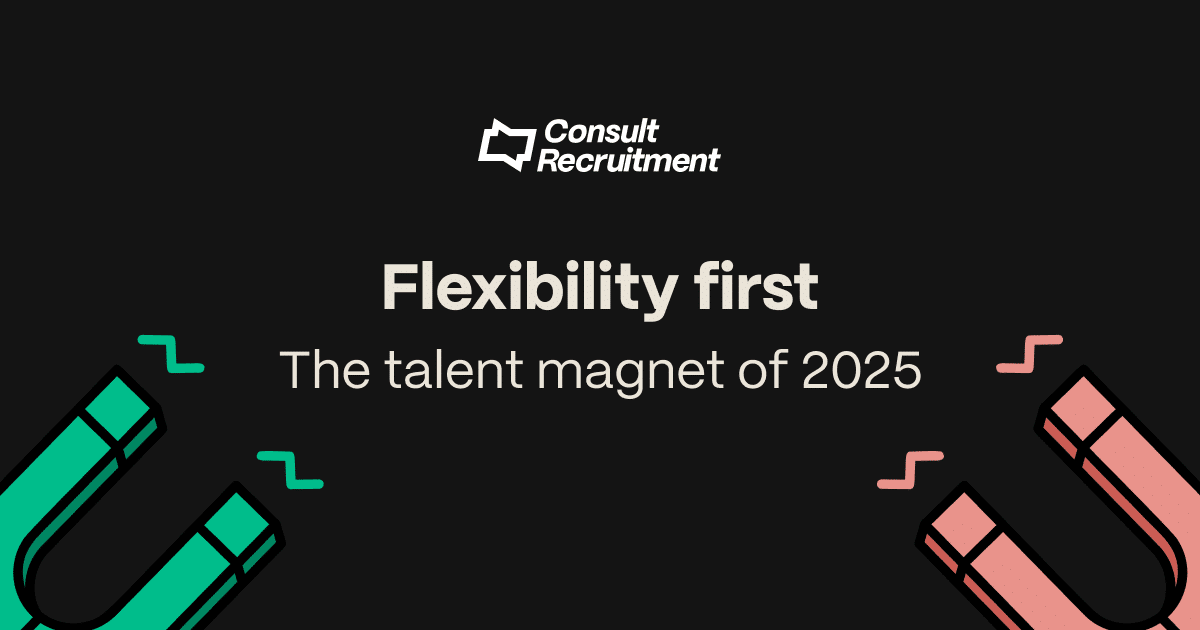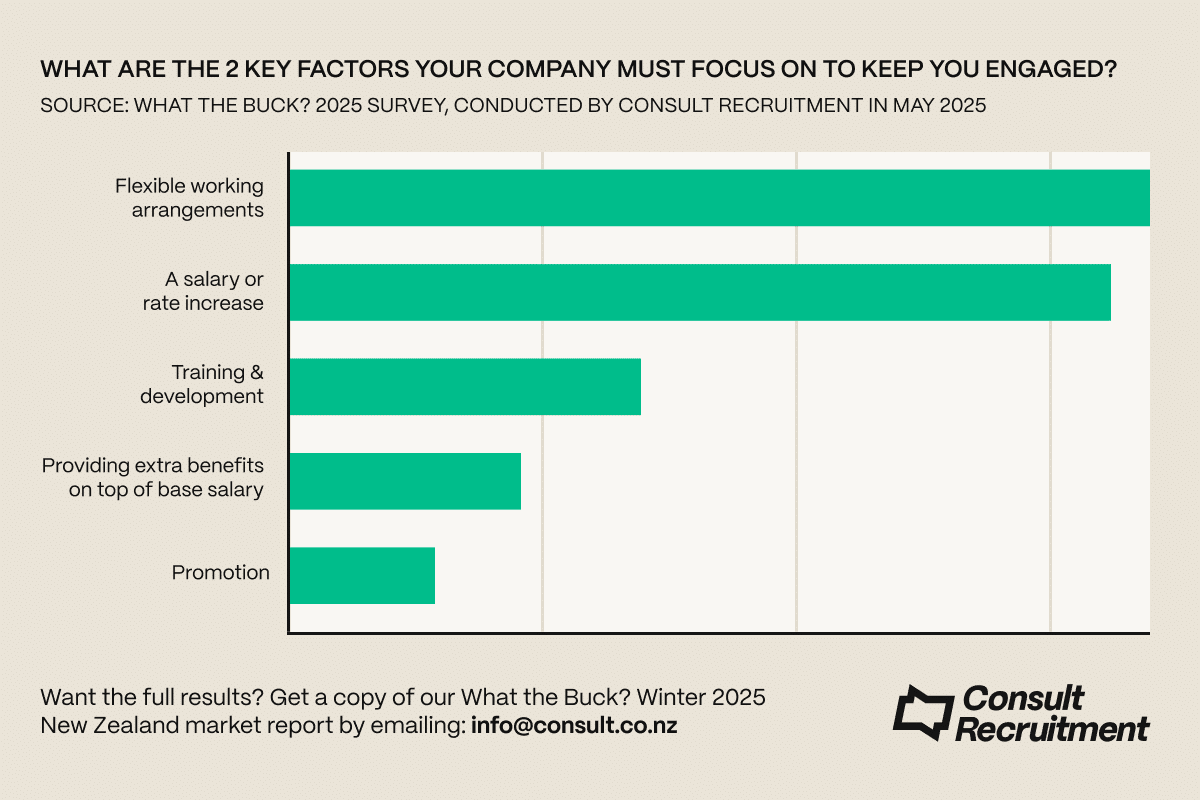
Flexibility first: The talent magnet of 2025
In our recent What the Buck? 2025 New Zealand market survey conducted in May, we asked both employees and employers what drives engagement at work.
For employees, flexible working came out as the #1 engagement factor, just ahead of salary and rate increases. Employers also responded that flexible working was a key retention strategy. So yes, both sides are on the same page.
If you’re wondering what flexibility in the workplace looks like in 2025, and how to use it as a recruitment and retention strategy, read on!
‘What the Buck?’ is Consult Recruitment’s proprietary research study designed to help businesses stay ahead of shifts and trends impacting people and the broader business landscape in New Zealand. Want the full results? Register for a copy of our What the Buck? 2025 Winter edition here.
Flexibility is more powerful than a pay rise? Yep.
This really stood out in this year’s What The Buck? research. Flexibility ranked higher than salary and rate increases when it comes to what keeps employees engaged. And that’s saying a lot.
This tells us that employees are valuing work-life quality just as much (if not more) than financial gain. And in a market where not every business can afford to throw cash around, flexibility becomes a real competitive edge.
So if you can’t pay top dollar, offering flexible working might just be your superpower.
Finding the ‘flexibility’ sweet spot between employee needs and business reality
The modern workplace is navigating a complex balancing act. While businesses recognise that flexibility has become essential for attracting and retaining talent, they’re also working to optimise their physical spaces and investments in ways that support both productivity and financial sustainability.
Meanwhile, employees are discovering new preferences about when and where they work most effectively. The magic of in-person collaboration like spontaneous conversations, the energy of working alongside colleagues and the team culture building moments can’t be replicated through a screen.
Yet the current reality can often fall short for both employers and employees: arriving at the office and spending a reasonable % of the day on video calls with remote teammates defeats the purpose and can leave teammates frustrated.
The workforce is signalling a clear preference for what we might call “purposeful flexibility” – the ability to make work location decisions based on actual business needs, team schedules and personal circumstances. This means being in the office when it truly adds value: for collaborative sessions, team meetings, client visits, or simply when the energy of working alongside colleagues enhances productivity.
For businesses, this shift represents both a challenge and an opportunity. Rather than seeing flexibility as a cost centre, forward-thinking organisations are rethinking their workplace strategies to maximise both employee satisfaction and office utilisation. This might mean creating more intentional “collaboration days” where teams coordinate their in-office time, redesigning physical spaces to support the work that happens best in person, or even reconsidering real estate strategies to better align with actual usage patterns.
When you get this balance right? Companies will find themselves with a significant competitive advantage: employees who choose to be in the office because it enhances their work, because they understand the investment businesses make into their space and not because they’re required to be there on a rigid schedule. That’s the kind of engagement that drives both retention and results for both the employer and the employee.
At Consult Recruitment, we’re having these conversations daily with clients, with candidates, and across industries. So if you’re not sure where to start, or how to get it right, we’ve got your back.
Need help hiring (and keeping!) great people in 2025? Reach out to us at info@consult.co.nz or follow us on LinkedIn for regular market insights, updates and tips to help you stay ahead in New Zealand’s job market.


